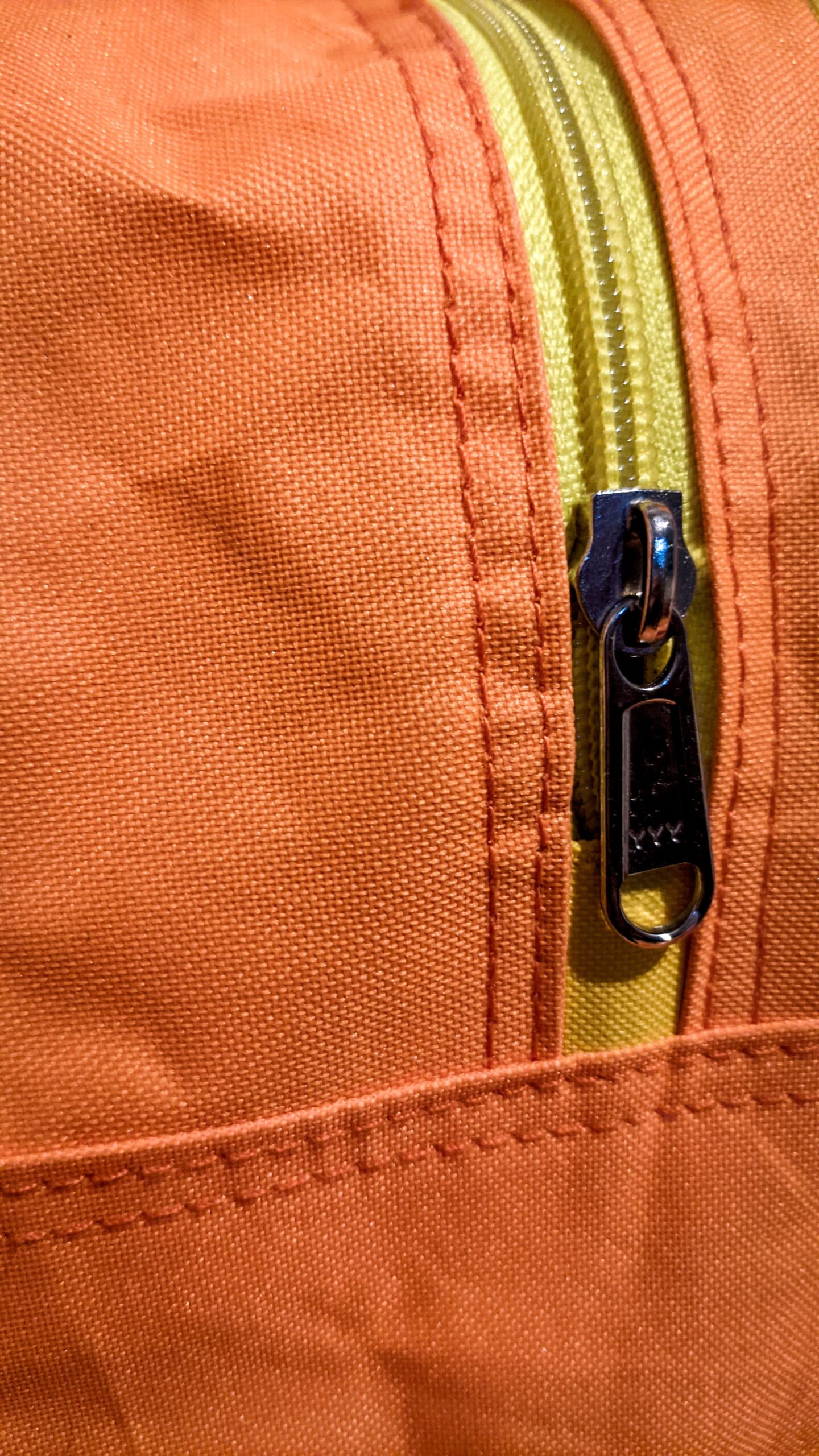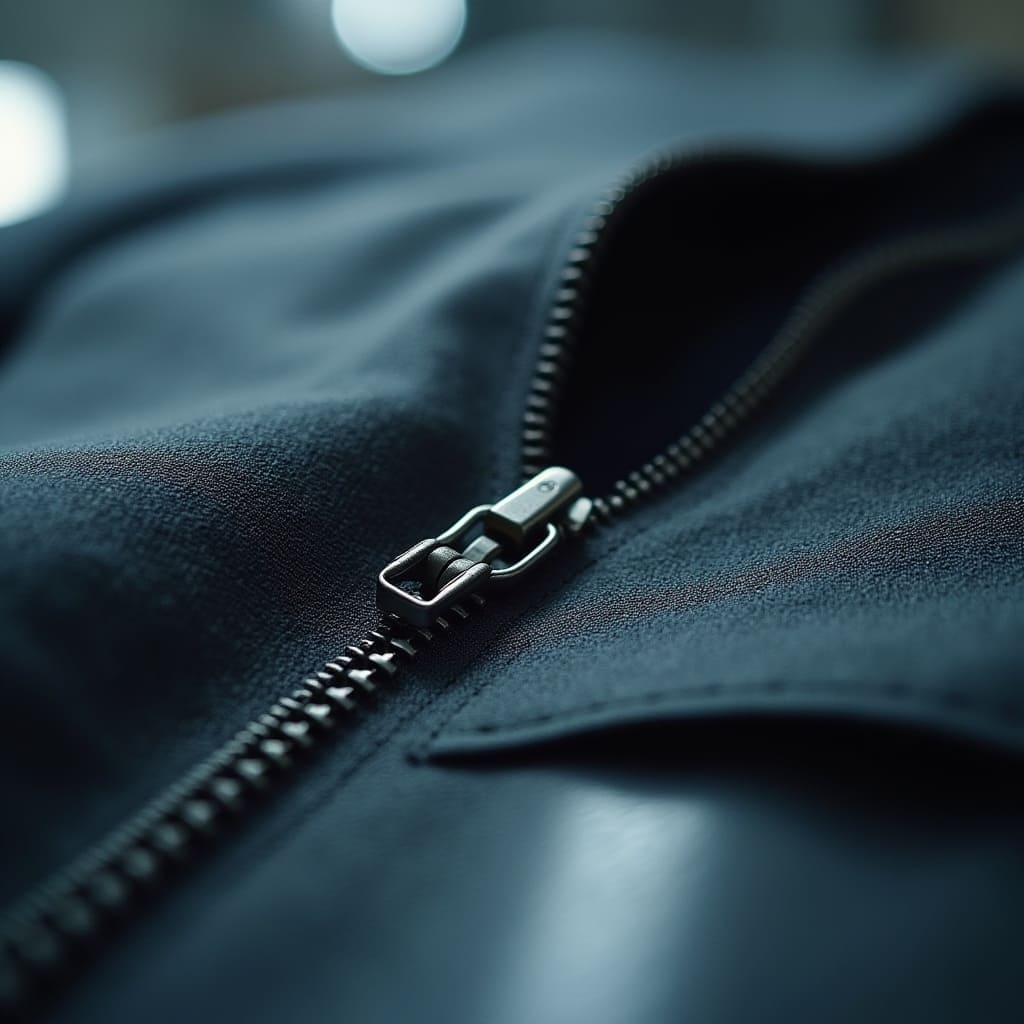Protective gear is only as reliable as its weakest component.
In garments and equipment exposed to extreme heat, a single failure along a seam or closure can have catastrophic consequences.
That’s why fire-resistant and flame-retardant (FR) zippers have become mission-critical in industries ranging from firefighting and utilities to aerospace and heavy manufacturing.
LenZip has spent decades refining zipper systems that hold their structure, strength, and closure integrity under the punishing conditions where ordinary fasteners would melt or ignite.
Understanding Flame Resistance and Retardancy
Not all “fireproof” claims are equal.
True fire-resistant materials resist ignition entirely, while flame-retardant systems are engineered to self-extinguish once the heat source is removed.
Zippers may employ both strategies, depending on application requirements.
At the molecular level, flame-retardant additives alter the polymer’s decomposition pathway, forming a char layer that insulates the underlying material.
Metal chains such as brass or gunmetal rely on thermal mass and oxidation resistance to survive flash temperatures that exceed 800 °F (425 °C).
LenZip combines these approaches by pairing high-temperature metallic components with non-combustible or FR-treated tapes.
Each closure undergoes controlled burn testing to verify that neither the tape nor the slider will drip, fuse, or lose function when exposed to direct flame.
Explore the Zipper Materials & Finishes Program that defines LenZip’s fire-resistant component options.

Why Standard Zippers Fail in Extreme Heat
Traditional nylon or acetal plastic melts at roughly 350 °F (175 °C).
During exposure to flame or electrical arc, these polymers can liquefy and bond to fabric fibers, compromising the garment and creating secondary hazards.
Even if the surrounding textile survives, a failed zipper prevents the wearer from removing or securing protective gear in an emergency.
LenZip’s fire-resistant designs replace low-temperature polymers with meta-aramid fiber tapes—the same family as Nomex®, Kevlar®, and Twaron®—which maintain dimensional stability beyond 700 °F (370 °C).
For metal-tooth versions, brass and gunmetal alloys provide structural strength and non-sparking reliability, while FR-coated polymer teeth offer lighter weight for high-mobility garments.
Learn more about choosing the right zipper materials for heat-exposed applications.
Material Engineering for Heat Resilience
A fire-resistant zipper is an engineered assembly, not a single material.
Each element—chain, tape, slider, and stop—must react predictably under thermal stress.
Aramid Tapes: Meta-aramids are inherently non-flammable and do not melt.
They carbonize in heat, forming a protective barrier that shields underlying fabrics.
Their low shrinkage ensures that seams remain intact even after repeated wash or flame exposure.
Brass and Gunmetal Chains: Chosen for high thermal conductivity and strength, these metals maintain tooth engagement under flash exposure.
Surface treatments prevent oxidation during extended high-temperature use.
FR-Nylon and Coated Plastics: For lighter garments, LenZip uses nylon blends infused with flame-retardant additives.
These tapes and teeth self-extinguish and emit minimal smoke when tested under ASTM D6413.
Sliders and Pullers: Metal sliders receive insulating coatings or are replaced by high-temperature polymers to prevent heat transfer to the user’s hands.
All materials are validated within the LenZip Materials & Finishes Program, which matches each component’s chemistry and melting point to the garment’s specification.
Testing and Industry Standards
Reliability in high-heat environments is verified through recognized global standards.
LenZip evaluates every FR zipper under ASTM D6413 for flame spread, ISO 15025 for limited flame spread on protective clothing, and NFPA 1971/2112 for firefighter and industrial PPE performance.
These tests measure char length, after-flame duration, and residual strength after exposure.
Additional cycle testing ensures the zipper maintains closure function after repeated laundering, contamination, and thermal cycling.
Zipper Testing Standards also include tensile, fatigue, and corrosion protocols that confirm long-term durability in field conditions.
Because safety gear is often reused for years, the zipper must retain both mechanical integrity and flame resistance across dozens of wash and dry cycles.
Applications Across High-Risk Industries
Firefighting and Rescue
Firefighters rely on zippers to secure turnout coats, pants, and protective hoods—gear that encounters direct flame, radiant heat, and steam pressure.
LenZip’s aramid-tape zippers are designed to function even after 10 seconds of flame exposure, allowing critical garments to remain closed until intentionally opened.
Sliders incorporate heat-resistant coatings that prevent binding when carbon residue builds along the teeth.
Electrical and Arc-Flash Protection
Utility workers and linemen face different challenges: sudden arcs that generate temperatures higher than a plasma torch.
Arc-rated zippers from LenZip feature insulating barriers between metal components and fabric layers, preventing conductivity while resisting instantaneous thermal expansion.
Combined with FR-treated tapes, they comply with NFPA 70E electrical-safety standards.
Aerospace and Defense
Flight suits, pilot gear, and ejection-seat covers demand zippers that balance weight and performance.
Metal-chain zippers with aramid tapes meet EN ISO 11612 for radiant-heat protection while keeping mobility high.
They continue to operate after exposure to high-velocity airflow and rapid temperature changes common in aviation.
See also Zippers for Aerospace and Aviation Textiles for related high-temperature innovations.
Oil, Gas, and Chemical Handling
In refinery and chemical-processing environments, flame is only one of many hazards.
FR zippers must also resist solvents, oils, and corrosive vapors.
LenZip integrates fluoropolymer coatings to block chemical attack and maintains full mechanical strength even after contact with hydrocarbons or acids.
Learn about chemical-resistant zipper design.
Industrial Maintenance and Welding
Welders, foundry operators, and plant technicians depend on FR closures that can withstand sparks, molten metal, and slag.
LenZip’s heavy-gauge metal-tooth chains and aramid-backed tapes provide repeatable performance through thousands of mechanical cycles without fraying or tearing.
Design Integration and OEM Guidelines
Designing with fire-resistant zippers requires precise coordination between garment engineers, material scientists, and safety officers.
The zipper must complement—not compromise—the surrounding fabric’s protective barrier.
LenZip advises OEMs to begin with a clear specification: expected temperature range, exposure duration, and regulatory framework.
From there, the engineering team matches tape composition and chain gauge to the garment weight and intended cleaning process.
Aramid or FR-treated polyester tapes can be sewn directly into outer shells using flame-resistant thread, while fully sealed systems may employ bonding or RF-sealable PU coatings for chemical-proof suits.
Every prototype undergoes validation before scale production.
LenZip’s U.S. facility allows small-run sampling for certification tests, ensuring that the final assembly meets NFPA and ISO standards without overseas delays.
Performance and Durability
Fire-resistant zippers must not only survive flame but also maintain usability afterward.
Repeated bending, washing, and exposure to sunlight or industrial chemicals can degrade untreated materials.
LenZip’s coatings and alloy treatments protect against oxidation, UV breakdown, and corrosion.
FR performance remains stable even after 20 laundering cycles, confirmed through BS 5651:1989 and internal endurance protocols.
To simulate real-world conditions, zippers undergo alternating heat and cool-down cycles to test expansion and contraction rates.
These procedures reveal potential warping or misalignment before production begins.
By controlling tape tension and tooth geometry, LenZip ensures that the zipper continues to slide smoothly long after the garment’s fabric begins to fade.
Discover how UV-resistant zippers extend product durability in outdoor applications.
Safety Certification and Compliance
Every FR zipper produced by LenZip ships with full documentation: material declarations, test reports, and traceable batch numbers.
Compliance covers U.S. OSHA PPE directives, EU CE marking requirements, and international norms under EN ISO 11611/11612 for protective clothing.
This transparency helps OEMs satisfy audits for large public-sector or industrial clients who demand documented proof of performance.
LenZip’s domestic manufacturing also provides supply-chain security, eliminating dependency on imported components of uncertain certification.
Learn why U.S.-made zippers strengthen supply-chain stability.

OEM Partnership and Customization
Because each safety application is unique, LenZip encourages early collaboration during the design phase.
OEM engineers can request specific tape widths, chain gauges, or slider types tailored to their thermal or mechanical requirements.
The company’s design library includes hundreds of molds and coatings that can be adapted to specialized use—from lightweight FR nylon zippers for uniforms to heavy brass chains for firefighting gear.
Customization also extends to color and branding.
While FR tapes are typically limited to subdued shades for safety visibility, LenZip’s Materials & Finishes Program supports pigment systems that maintain flame resistance while matching corporate or agency color standards.
Sustainability and Lifecycle Value
Durability contributes directly to sustainability in protective equipment.
Replacing zippers prematurely adds cost and waste; ensuring they last the full garment lifecycle reduces environmental impact.
LenZip’s FR zippers are designed for repair and recycling compatibility where possible, using metal alloys and polymer blends that can be separated during end-of-life processing.
This approach aligns with growing corporate mandates for circular manufacturing and responsible sourcing—proof that safety and sustainability can coexist in high-performance components.
Learn more about eco-engineered zipper initiatives.
Why LenZip Leads in Fire-Resistant Closure Design
With manufacturing roots stretching back to 1946, LenZip remains one of the few U.S. companies that produce complete zipper assemblies domestically.
Its vertical integration allows meticulous control over chain molding, tape coating, and quality testing.
Every zipper is engineered to meet precise ASTM and ISO parameters, supported by in-house laboratories that replicate the harshest field conditions.
For OEMs, this means faster development cycles, consistent quality, and direct access to engineers who understand both textile science and regulatory compliance.
LenZip’s reputation for reliability extends across industries—from emergency response to aerospace—where failure is not an option.
Discover additional industrial zipper solutions and custom PPE closures.
Learn More
For technical data sheets, certification documentation, and engineering assistance, visit the LenZip Resources Hub.
To begin specifying fire-resistant or flame-retardant zippers for your PPE or industrial application, request a quote and collaborate directly with LenZip’s engineering team.
Frequently Asked Questions
What temperature can fire-resistant zippers withstand?
Brass-chain and aramid-tape zippers from LenZip remain functional at intermittent exposures up to 500 °F (260 °C) and maintain closure integrity even when outer fabrics char.
Which standards govern FR zipper testing?
Key standards include ASTM D6413, ISO 15025, EN ISO 11611/11612, and NFPA 1971/2112, all verified through LenZip’s Zipper Testing Protocols.
Can FR zippers be customized?
Yes. Tape composition, chain size, slider material, and coating formulation are all customizable. Request a Quote to specify your exact parameters.
Do flame-retardant coatings wash out over time?
No. LenZip’s FR treatments are permanently bonded to the substrate and remain effective through dozens of industrial wash cycles.
Are metal zippers always better than plastic for FR applications?
Not always. Modern FR-treated plastics provide lighter weight and greater flexibility for garments that don’t face direct flame but must resist radiant heat. Material choice depends on application and certification needs.
